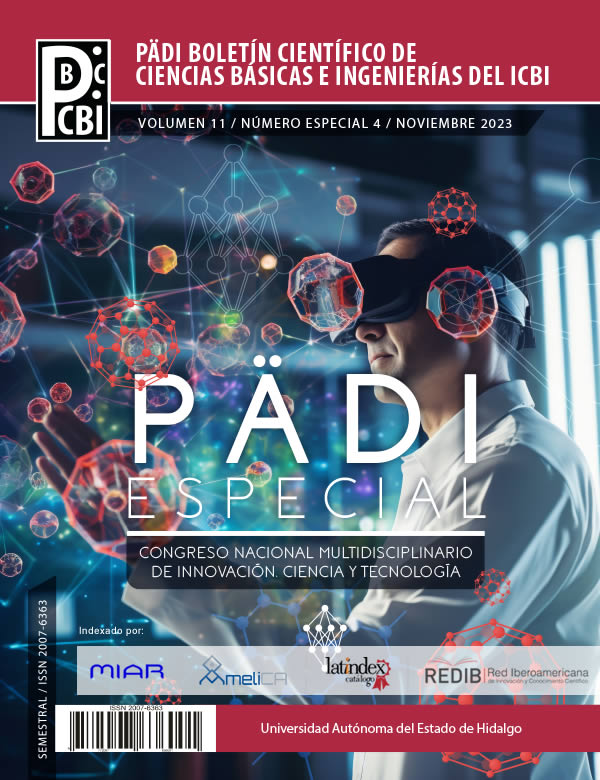Mobile robot construction stages with a sensing and communication system
Abstract
The fourth industrial revolution entails social, material and technological changes; digitization, internet and great diversity and amount of information. It is in the way we communicate, relate, work, not only physically, nor on business days or at certain times; in the educational field, content based on active competencies and methodologies is being adapted; Specific materials are being incorporated, on mobile platforms and applications, for courses, graduates, specialties and postgraduate courses, face to face and virtual, to approach more territories, national and international, at all educational levels. This work, sticking to industry 4.0, shows the development to build a mobile robot with sensing and communication systems and algorithms based on complex systems, to experiment with collaborative work; since educational robotics is a facilitating and attractive means of learning, which simulates creativity and individual and collaborative activities, this prototype can be useful in teaching active entities.
Downloads
References
Basco, A. I., Beliz, G., Coatz, D., & Garnero P. (2018). Industria 4.0: Fabricando el futuro. Unión Industrial Argentina, 41. DOI: 10.18235/0001229
Bravo-Sánchez, F.A., & Forero-Guzmán, A. (2012). La robótica como recurso para facilitar el aprendizaje y desarrollo de competencias generales. Teoría de la Educación: Educación en la Sociedad de la Información, 13(2), 120-136. DOI: 10.14201/eks.9002
Ruiz-Velasco-Sánchez, E. (2007). Educatrónica Innovación en el Aprendizaje de las Ciencias y la Tecnología. Ediciones Días de Santos. https://bit.ly/3hDCf0d
Camacho Marín, R., Rivas Vallejo, C., Gaspar Castro, M., & Quiñonez Mendoza, C. (2020). Innovación y tecnología educativa en el contexto actual latinoamericano. Revista de Ciencias Sociales (Ve), 26, 460-472.
Miler, D.P., Nourbakhsh, I.R. & Siegwart, R. (2008). Robots for Education. In: Siciliano B., Khatib O. (eds). Springer Handbook of Robotics. DOI: 10.1007/978-3-540-30301-5_56
González Fernández, M. O., Flores González, Y. A., & Muñoz López, C. (2021). Panorama de la robótica educativa a favor del aprendizaje STEAM. Revista Eureka sobre Enseñanza y Divulgación de las Ciencias, 18(2), 230101-230123. https://doi.org/10.25267/Rev_Eureka_ensen_divulg_cienc.2021.v18.i2.2301
Marco Dorigo, Guy Theraulaz, Vito Trianni. (2021). Swarm Robotics: Past, Present, and Future [Point of View]. Proceedings of the IEEE. 109 (7), pp.1152-1165. DOI:10.1109/JPROC.2021.3072740.
Ying, T., & Zhong-Yang, Z. (2013). Research advance in swarm robotics. Defence Technology, 9, 18-39. DOI: 10.1016/j.dt.2013.03.001
Heath, S., (2002). What is an embedded system? Embedded systems design (pp. 1-14). EDN Series for design engineers. DOI: 10.1016/B978-0-7506-5546-0.X5000-2
Alva, J. L., & Alcorta, N. F. (2020). Sistemas Embebidos Guía metodológica para su desarrollo (1.ª ed., pp. 20–21). Urb Monserrate, Trujillo, Perú: Universidad Privada Antenor Orrego.
Gomez-Fuentes, M.C. (2011) Material didáctico notas del curso análisis de requerimientos. Universidad Autónoma Metropolitana. https://bit.ly/3yqCWQo
Brace, W., & Cheutet V. (2011). A Frame to Support Requirements Analysis in Enfineering Design. Journal of Engineering Design, 23(12), 1-29. DOI: 10.1080/09544828.2011.636735
Copyright (c) 2023 Margarita Elizabeth Gómez-Mayorga, Luz Noé Oliva-Moreno, Claudia Marina Vicario-Solórzano

This work is licensed under a Creative Commons Attribution-NonCommercial-NoDerivatives 4.0 International License.













